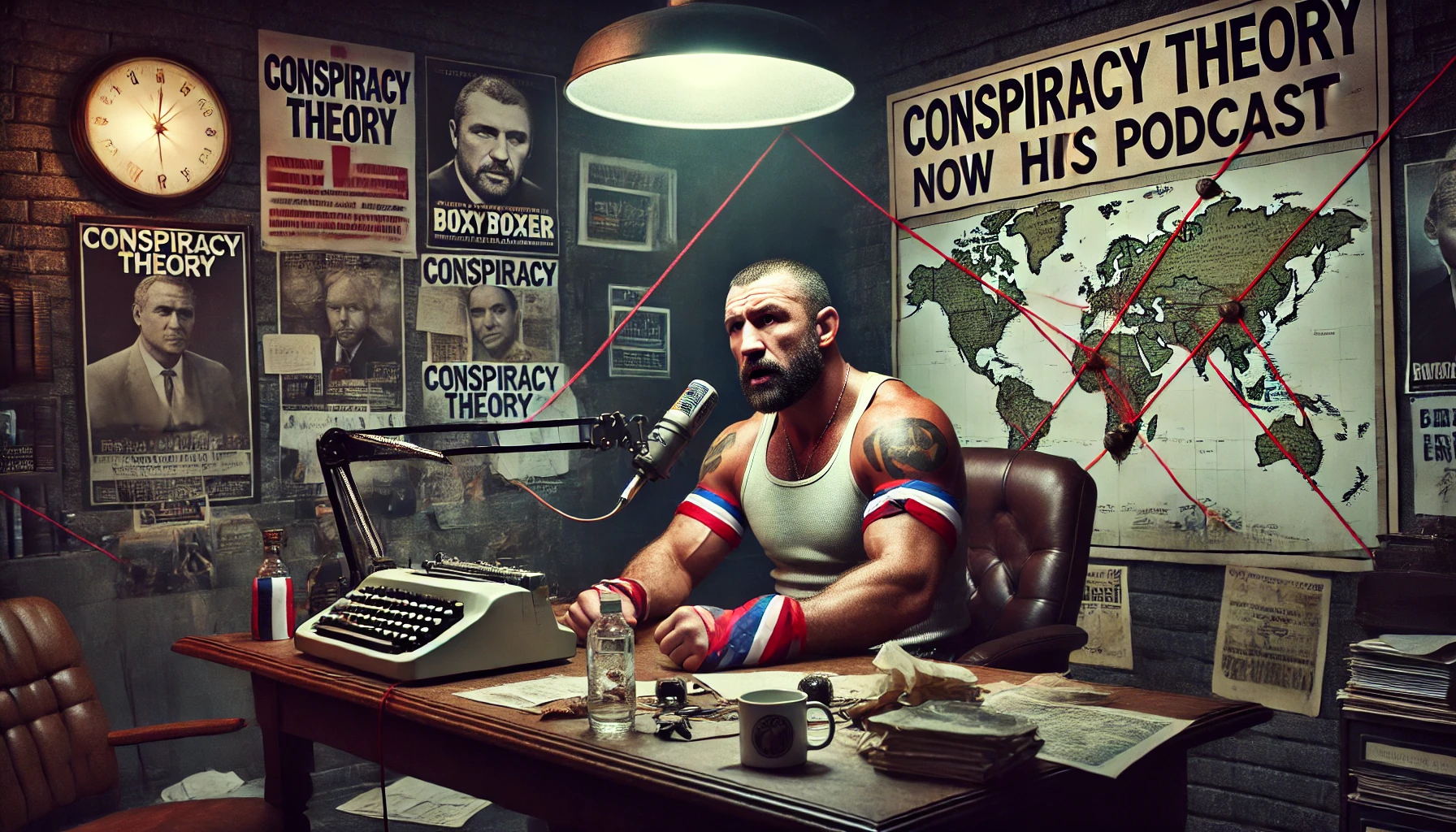
Jordan Peterson: The Polarizing Journey of a Canadian Psychologist
Introduction
My image above is not a swipe, it shows the beauty and vulnerability of a lovely, well-intentioned man who is dancing with reality and sharing his perspective in ways that others refuse and have failed to do. The man is fearless and has become quite the luminous teacher, a task nearly impossible in such a hashtag-obsessed, anti-authenticity world.
Jordan Peterson, a Canadian psychologist and professor, has become one of the most polarizing figures in contemporary discourse. Known for his criticisms of political correctness, advocacy for free speech, and exploration of archetypal stories, Peterson has garnered a significant following while also attracting substantial criticism.
Despite the controversy, Peterson’s profound impact on countless individuals seeking guidance and personal growth cannot be understated.
This article provides a comprehensive examination of Jordan Peterson’s journey, highlighting his contributions to psychology, his rise to fame, and the controversies that have surrounded him.
Early Life and Academic Career
Jordan Bernt Peterson was born on June 12, 1962, in Edmonton, Alberta, Canada. Raised in a conservative Christian household, Peterson developed an early interest in literature, philosophy, and political science. He pursued these interests academically, earning a Bachelor’s degree in Political Science from the University of Alberta in 1982. He later returned to the University of Alberta to complete a second Bachelor’s degree in Psychology in 1984.
Peterson’s academic journey continued at McGill University, where he earned his PhD in Clinical Psychology in 1991. His doctoral research focused on alcoholism and its related behaviors, laying the foundation for his interest in the psychological underpinnings of human behavior. After completing his PhD, Peterson worked as a post-doctoral fellow at McGill’s Douglas Hospital, where he continued to hone his clinical skills and research expertise.
In 1998, Peterson joined the faculty of psychology at the University of Toronto, where he became known for his engaging lectures and rigorous approach to the study of personality, mythology, and religious belief systems. His academic work includes research on personality traits, such as the Big Five personality traits model, and their implications for behavior and mental health.
Literary Contributions and Philosophical Views
One of Peterson’s significant contributions to psychology and popular culture is his book “Maps of Meaning: The Architecture of Belief,” published in 1999.
In this work, Peterson explores the structure of systems of belief and the role of myths and religious stories in shaping human experience. He argues that myths serve as cultural tools for transmitting complex ideas and values across generations, helping individuals navigate the chaos of existence.
Jordan’s ability to distill and communicate these complex ideas has made profound psychological and philosophical insights accessible to a broad audience, helping men and women see themselves and their relationships more clearly. This leads to happier lives and a more resolute commitment to healing, clarity, and peacefulness.
Peterson’s fascination with archetypal stories and their psychological significance led him to examine the works of Carl Jung, Friedrich Nietzsche, and Fyodor Dostoevsky, among others. His lectures often draw upon these thinkers to explore themes such as the hero’s journey, the nature of evil, and the quest for meaning in life.
Peterson’s philosophical views emphasize the importance of personal responsibility, individualism, and the pursuit of meaning. He advocates for a return to traditional values and structures, arguing that these provide stability and purpose in an increasingly chaotic world. His emphasis on the importance of confronting one’s own shortcomings and striving for self-improvement resonates with many of his followers.
Rise to Fame and Public Controversy
Jordan Peterson’s rise to fame began in 2016 when he publicly opposed Canada’s Bill C-16, which proposed adding gender identity and gender expression to the list of prohibited grounds of discrimination. Peterson argued that the bill would compel speech by requiring individuals to use preferred gender pronouns, infringing on free speech rights. His stance quickly drew both support and criticism, thrusting him into the national and international spotlight.
Peterson’s opposition to Bill C-16 was just the beginning of his foray into public debate. He started a YouTube channel, where he posted lectures, interviews, and commentary on various topics, including political correctness, postmodernism, and cultural Marxism. His articulate and often provocative views resonated with a broad audience, leading to millions of followers and widespread media coverage.
In 2018, Peterson published “12 Rules for Life: An Antidote to Chaos,” a self-help book that combines psychological insights with practical advice for living a meaningful life. The book became a bestseller, further cementing Peterson’s status as a cultural icon. Its success led to a global speaking tour, where Peterson attracted large audiences eager to hear his thoughts on life, meaning, and societal issues.
Amazing Help to Many
Jordan Peterson has been an incredible help to many people, particularly through his book “12 Rules for Life” and his lectures on self-improvement and personal responsibility. His practical advice, such as “clean your room” and “stand up straight with your shoulders back,” may seem simple, but they resonate deeply with those struggling to find direction and purpose in their lives. By encouraging individuals to take control of their surroundings and make incremental changes, Peterson has empowered many to improve their mental health and overall well-being.
Peterson’s insights into the importance of meaning and responsibility have provided solace to those feeling lost or overwhelmed by modern life’s complexities. His emphasis on taking personal responsibility, facing challenges head-on, and striving for improvement has inspired countless individuals to make positive changes in their lives.
Testimonials from his followers often highlight how his teachings have helped them overcome personal obstacles, improve relationships, and find a greater sense of purpose. For example, one follower shared how Peterson’s lectures inspired them to pursue a career change they had long feared, resulting in a more fulfilling and successful life. Another recounted how his emphasis on personal responsibility helped them mend fractured family relationships and build a stronger, more supportive network. Others have stated that Jordan’s teachings about reciprocity and clarity within relationships helped them feel loved, accepted, and whole—changing almost every aspect of their lives.
This widespread, positive influence underscores the profound impact of Peterson’s work on individuals around the world.
Jordan might be wild, unusual, unruly, and confrontational, but, my heavens, many of his insights are unprecedented in this now soft, precious little, oppressive world.
And while sometimes he seems to be contorting his perspective just a little bit to give greater credence to his ideology compared to others, the vast majority of what he offers is clear, impactful, and profound.
And let me just say this: The mutherfucker is courageous! Thank you, Jordan!
Divisive and Manipulative Ideas
Despite his positive impact on many, some of Peterson’s ideas can be both divisive and manipulative, and potentially dangerous if misinterpreted or taken to extremes. His critiques of feminism and gender equality, for instance, have been accused of reinforcing traditional gender roles and undermining efforts toward gender equity. Peterson’s assertions that gender differences are rooted in biology and that societal interventions to equalize outcomes are misguided can be seen as dismissive of the structural barriers that many face.
Peterson’s commentary on postmodernism and cultural Marxism has also sparked significant debate. His portrayal of these intellectual movements as threats to Western civilization and his framing of identity politics as divisive have resonated with some but alienated others. Critics argue that his simplification of complex theories and his rhetoric can fuel polarization and foster an us-versus-them mentality.
Moreover, Peterson’s ideas on hierarchy and order can be interpreted in ways that justify authoritarianism and social inequality. His belief in the necessity of hierarchies and the natural order can be used to rationalize the status quo and resist progressive change. This aspect of his philosophy can be particularly dangerous when adopted by those seeking to maintain or exacerbate existing power dynamics.
Most Helpful Traits and Teachings
Despite the controversies, Peterson’s most helpful traits and teachings are deeply rooted in his understanding of psychology and his ability to communicate complex ideas in an accessible manner. His focus on the importance of meaning and personal responsibility has been transformative for many. By encouraging individuals to find purpose through responsibility and to confront the chaos in their lives, Peterson provides a framework for personal growth and resilience.
Peterson’s emphasis on the value of tradition and structure offers a counterbalance to the often overwhelming pace of modern life. His teachings on the significance of rituals, routines, and cultural narratives help individuals find stability and coherence. This approach resonates with those who feel disoriented by rapid societal changes and seek a sense of grounding.
Another beneficial aspect of Peterson’s work is his advocacy for mental health and well-being. His discussions on the psychological underpinnings of behavior, the importance of facing one’s fears, and the necessity of setting goals and making sacrifices for long-term rewards offer practical guidance for personal development. His willingness to share his own struggles with mental health also humanizes him and makes his advice more relatable and impactful.
Peterson’s exploration of myth and archetype provides valuable insights into the human condition. By drawing on Jungian psychology and the works of great literary figures, he elucidates the deep structures that shape our perceptions and behaviors. This understanding helps individuals navigate their inner worlds and make sense of their experiences in a broader context.
Personal Struggles and Return to Public Life
In recent years, Peterson has faced significant personal challenges. In 2019, he revealed that he was dealing with severe health issues, including addiction to benzodiazepines, which were prescribed to him for anxiety following his wife’s cancer diagnosis. His subsequent struggle with withdrawal and his search for treatment led him to seek medical care in various countries, including Russia and Serbia.
Peterson’s health struggles and his absence from public life raised concerns among his followers and provided fodder for his critics. In 2021, he returned to the public sphere with a renewed focus on his work and a determination to continue contributing to the discussions he had ignited.
Legacy and Influence
Despite the controversies, Jordan Peterson’s influence on contemporary discourse is undeniable. He has played a significant role in bringing complex psychological and philosophical ideas to a broader audience. His emphasis on personal responsibility, meaning, and the importance of confronting chaos has resonated with many seeking guidance in a tumultuous world.
Peterson’s ability to engage with a wide range of topics and his willingness to challenge prevailing cultural norms have made him a prominent figure in the culture wars. Whether one agrees with his views or not, his impact on public debate and the dissemination of psychological and philosophical ideas is significant.
Conclusion
Jordan Peterson is a figure of considerable complexity, whose work spans psychology, philosophy, and cultural criticism. His rise to fame, marked by both profound influence and intense controversy, reflects the polarized nature of contemporary discourse. While his ideas on personal responsibility and meaning have inspired many, his views on gender, postmodernism, and identity politics have sparked significant debate and criticism.
Ultimately, Peterson’s journey underscores the importance of engaging with diverse perspectives and the challenges of navigating the intersection of academia, media, and public life. His legacy will likely continue to be debated, but his contributions to the conversation about human behavior, society, and meaning remain a crucial part of the ongoing dialogue.
The Deeper Journey
Clearly Jordan Peterson has a heart full of pathos for factions of humanity. Yet, his focus on meaning, potential, and confronting his detractors, while valuable in many respects, often distracts him from embarking on a deeper spiritual journey. The constant engagement in intellectual battles and the pride of personal development can entangle one in the ego and hinder the awakening of the eternal, core nature. To truly self-realize, one must look beyond the confines of the ego and embrace the profound, inner essence that connects us all to a higher state of being.
The journey toward deepening and awakening involves transcending the superficial aspects of personal achievement and intellectual recognition. It requires a shift from outward validation to inner exploration, where the true essence of the self resides. This inner journey is not about accumulating knowledge or winning debates but about dissolving the ego and uncovering the boundless potential of the soul. When one is too caught up in the trappings of ego and pride, the path to genuine spiritual enlightenment becomes obscured.
The Shankara Oracle offers a pathway to this deeper journey with its lavishly designed divination board, 18 sacred stones, 4 oracle decks, 2 booklets, and profound divine guidance. This comprehensive spiritual tool helps individuals clear away old patterns and distractions, making room for clear intentions and bright visions for the future. The oracle’s guidance facilitates a profound connection to one’s true self, fostering an identity immersed in love, goodness, and integrity. It encourages introspection and a shift from ego-driven pursuits to soul-centered growth.
Using The Shankara Oracle, one can navigate life’s challenges with clarity and purpose, allowing for a deeper connection with the divine. This practice helps to dissolve the layers of ego and pride that often cloud our judgment, opening the way to a more meaningful and spiritually fulfilling life. By aligning with the values and insights provided by the oracle, individuals can transcend the superficial and awaken to their eternal, core nature, embracing the true essence of their being and contributing to a more compassionate and enlightened world.
As an admirer of his work, I believe Peterson’s emphasis on personal growth, responsibility, and the search for meaning has provided invaluable guidance to those seeking to navigate the complexities of modern life. His teachings continue to resonate and inspire, offering a beacon of hope and clarity in an often chaotic world.
Get The Shankara Oracle and dramatically improve your perspective, relationships, authentic Self, and life.











